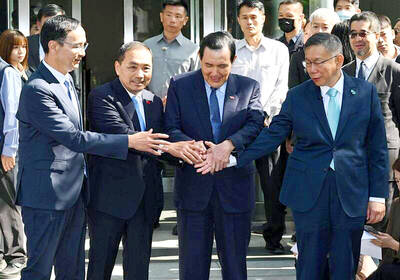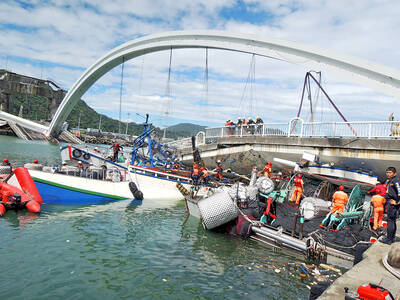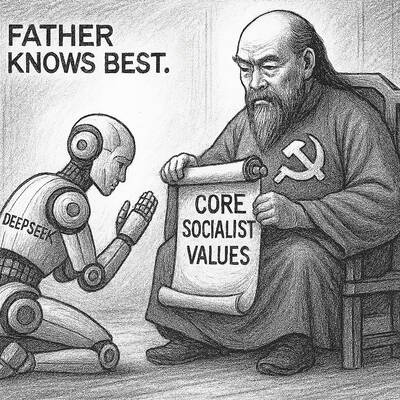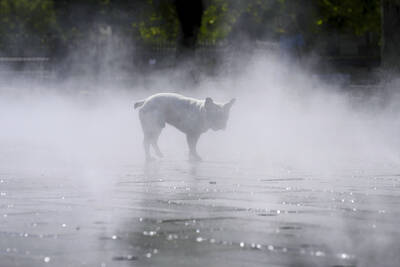Because greater Los Angeles is the land of cars and of plenty of places to park them, it is also home to untold numbers of garage tinkerers, who practically live in the lairs next to their houses, dreaming, puttering, fixing and fiddling.
It is probably safe to say that none of them have spent time recently constructing a frighteningly realistic-looking flying bat using only twist ties and black-plastic RadioShack bags that have been shriveled into bat skin with a heat gun. Or transforming gobs of children's modeling clay into what appears to be a large backbone of a prehistoric animal — except that, if you look closely, the vertebrae are actually tiny oarsmen and the curving ribs their oars. Or piecing together a huge bright-pink collage photograph of an octopus whose suckers are actually close-ups of a man's wet mouth squished up against the glass of a photo scanner.
The tinkerer in question here is a full-time one: the artist Tim Hawkinson, 46, who has become renowned over the last decade for works that push the ideas of personal industry and invention to fantastic and often absurd conclusions: a crude machine that endlessly signs his signature; a bird skeleton made from his fingernail clippings; a contraption that simulates Siberian throat-singing by using plastic soda bottles. For the last several months Hawkinson has been at work on four new pieces that extend his eccentric exploration of the natural world, the body and the detritus of modern life. But the works will serve another purpose as well, that of announcing the intentions of the J. Paul Getty Museum in nearby Brentwood to venture more boldly into the world of contemporary art.

PHOTO: NY TIMES NEWS SERVICE
The museum commissioned the works — the bat, the backbone, the octopus collage and an imposing ink drawing evoking a dragon — and displayed them beginning Tuesday, along with a monumental work by Hawkinson called Uberorgan, never before shown in Los Angeles, which will fill the museum's cavernous entry hall with bellows the size of school buses.
The works will not become part of the Getty's collection. But the exhibition will be the first in a series of projects planned by the museum's curators as a way of rethinking how contemporary work can illuminate and play off of the Getty's core collection, of antiquities, Old Master paintings, 18th- and 19th-century decorative arts and photographs. The Getty's photo collection, one of the world's best, is the only component of the museum with significant modern and contemporary holdings.
In past contemporary exhibitions at the museum the connections drawn between new and old were generally explicit. Departures, a 2000 show, asked Los Angeles-area artists like John Baldessari and Lari Pittman to choose pieces from the permanent collection and make works responding to them.
Hawkinson's work might be seen as having more in common with a carnival funhouse than it does with a museum, especially one like the Getty. But Peggy Fogelman, an assistant museum director and the curator working with Hawkinson, said his work struck her as a perfect beginning for the new projects because of his almost obsessively broad interests in materials and subjects, including art-historical ones like portraiture, sculpture and the act of drawing.
"I kind of like to think of this as the Getty's maturing into more confidence and faith in contemporary art, that the connections will be there without having to impose them," said Fogelman, who was visiting Hawkinson's neat concrete-floored studio one recent morning to see the finished works together for the first time. "Hopefully what this inaugurates is a more regular engagement with artists for contemporary projects."
Hawkinson, who moved several years ago from downtown Los Angeles to this modest town at the foothills of the San Gabriel Mountains, had never before created work based around a single theme. But he agreed to do so for the Getty, forming the new pieces around the idea of a psychiatric condition that has intrigued him for several years, zoopsia, in which people hallucinate animals, sometimes during delirium tremens.
"The pink elephant thing," he said, adding that the basic idea was akin in some ways to his way of working.
"I often — not really hallucinate — but I see something that I think is one thing but it's actually another thing," he said, "and I realize the visual slip and find it kind of intriguing."
For instance the idea for the skeleton — made partly from a children's clay manufactured by Crayola — came to him when he and his wife and daughter visited the Natural History Museum in London and gazed up at a brontosaurus skeleton.
"The vertebrae all the sudden suggested Polynesian oarsmen in a canoe," he said, adding that he has named the piece Leviathon, suggesting both monster and manmade enigma. (The "head" of the skeleton is actually the figure of a very thin man, somewhat resembling Hawkinson, crouched with his knees drawn up, the legs forming the mandibles of the jaw and his curved back the brow and nose.)
Taken together the pieces work as a kind of natural-history diorama gone very wrong. But the plastic-bag bat, with its beady twist-tie eyes, will undoubtedly generate the most rubbernecking at the Getty, where it will be suspended at around eye level and lighted dramatically from below.
As he stared at it closely the other day, touching its "fur" — also pieces of RadioShack bags, painstakingly shredded into hairs with a razor blade — Hawkinson said that some of his neighbors had been by to see it and seemed to like it. But then again, strange creatures emerging from the Hawkinson residence are nothing new by now.
"It's just a suburban neighborhood," he said, "with this kind of scary artist in the backyard."

Has the Taiwan People’s Party (TPP) changed under the leadership of Huang Kuo-chang (黃國昌)? In tone and messaging, it obviously has, but this is largely driven by events over the past year. How much is surface noise, and how much is substance? How differently party founder Ko Wen-je (柯文哲) would have handled these events is impossible to determine because the biggest event was Ko’s own arrest on multiple corruption charges and being jailed incommunicado. To understand the similarities and differences that may be evolving in the Huang era, we must first understand Ko’s TPP. ELECTORAL STRATEGY The party’s strategy under Ko was

Before the recall election drowned out other news, CNN last month became the latest in a long line of media organs to report on abuses of migrant workers in Taiwan’s fishing fleet. After a brief flare of interest, the news media moved on. The migrant worker issues, however, did not. CNN’s stinging title, “Taiwan is held up as a bastion of liberal values. But migrant workers report abuse, injury and death in its fishing industry,” was widely quoted, including by the Fisheries Agency in its response. It obviously hurt. The Fisheries Agency was not slow to convey a classic government

It’s Aug. 8, Father’s Day in Taiwan. I asked a Chinese chatbot a simple question: “How is Father’s Day celebrated in Taiwan and China?” The answer was as ideological as it was unexpected. The AI said Taiwan is “a region” (地區) and “a province of China” (中國的省份). It then adopted the collective pronoun “we” to praise the holiday in the voice of the “Chinese government,” saying Father’s Day aligns with “core socialist values” of the “Chinese nation.” The chatbot was DeepSeek, the fastest growing app ever to reach 100 million users (in seven days!) and one of the world’s most advanced and

It turns out many Americans aren’t great at identifying which personal decisions contribute most to climate change. A study recently published by the National Academy of Sciences found that when asked to rank actions, such as swapping a car that uses gasoline for an electric one, carpooling or reducing food waste, participants weren’t very accurate when assessing how much those actions contributed to climate change, which is caused mostly by the release of greenhouse gases that happen when fuels like gasoline, oil and coal are burned. “People over-assign impact to actually pretty low-impact actions such as recycling, and underestimate the actual carbon